Inside This 300-Year-Old Abandoned Home in Arunachal, 8 Women Are Reviving Monpa Food Traditions
High in the Chug Valley of Arunachal Pradesh, a bright red table has assumed the role of a culinary custodian.
Think of Damu’s Heritage Dine, started in March 2024, as a pretty exemplar of how a community’s umbilical links with its food can be preserved in simple ways. Sharing how they were convinced to embrace the idea of the community dining space, host Leike Chomu (23) recalls the challenges that she and seven other families were facing, “We used to farm earlier. But slowly, people were stopping to buy buckwheat and millets (staples grown by the Monpa tribe).” The changing palate preferences saw the men being relegated to the fields as daily wage labourers, while the women did what they knew best — weaving.
But there was an evident sadness in watching their culture gradually walk into oblivion.
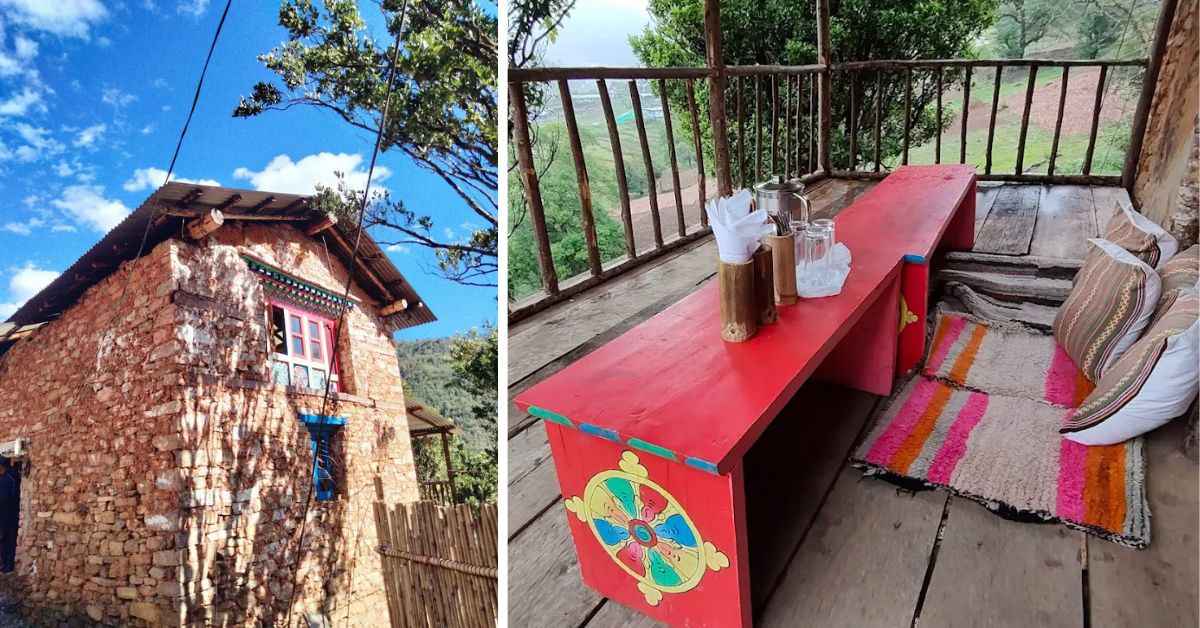 Damu’s Heritage Dine is a community dining space in the Chug Valley of Arunachal Pradesh, Pictures source: (L): Nayanjyoti Bora, (R): Amit Thakur
Damu’s Heritage Dine is a community dining space in the Chug Valley of Arunachal Pradesh, Pictures source: (L): Nayanjyoti Bora, (R): Amit Thakur
So, when the World Wildlife Fund for Nature (WWF) India pitched them an idea — in line with the WWF’s goal of nurturing CCAs (community conserved areas), the boutique eatery would offer the Monpa people a lifeline of sorts — the prospect excited Leike and the others. They were on board.
This kicked off Damu’s Heritage Dine, which is helmed by eight women; ‘Damu’ translates to ‘daughter’ in Duhumbi, the local language of Chug.
Today, we dine with them. Tag along.
Resuscitating fading authentic traditions
Damu’s Heritage Dine has a dual vantage, Leike points out. For one, it’s bearing witness to a resurgence of Monpa foods; it’s also what restrains the community from unsustainable practices. “Previously, our basti (hamlet) would earn from selling hunted meat or chopped wood. But the WWF wanted the forest to be saved,” Leike explains.
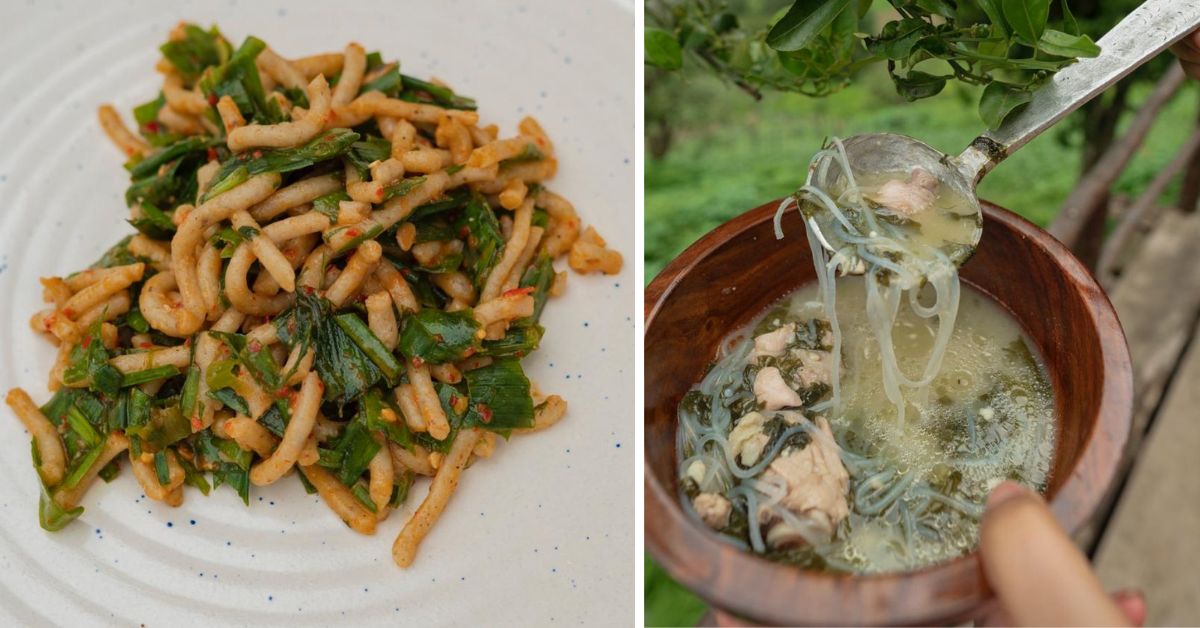 The takto khaji (buckwheat noodles) (L) and thukpa (R) that are specialities at Damu’s Heritage Dine, Pictures source: Damu’s Heritage Dine
The takto khaji (buckwheat noodles) (L) and thukpa (R) that are specialities at Damu’s Heritage Dine, Pictures source: Damu’s Heritage Dine
When requested to stop, the community had a simple — but fair retort, “Then how can we earn?” Thus came about the idea of this community tourism model that would be championed by eight families.
Now, here was a brilliant idea.
But, where was the space to start this diner?
The women found the answer staring at them in the form of a 300-year-old abandoned house; this was one of the members’ Sinku Zamgmu’s ancestral homes. “We decided that we would not let it go to waste. Instead, we would convert it into something,” Leike shares with The Better India. In the weeks that followed, the tumbledown space underwent a metamorphosis into its present form, in which it’s witnessing a celebration of heritage culinary techniques, the pride of the Monpa clan.
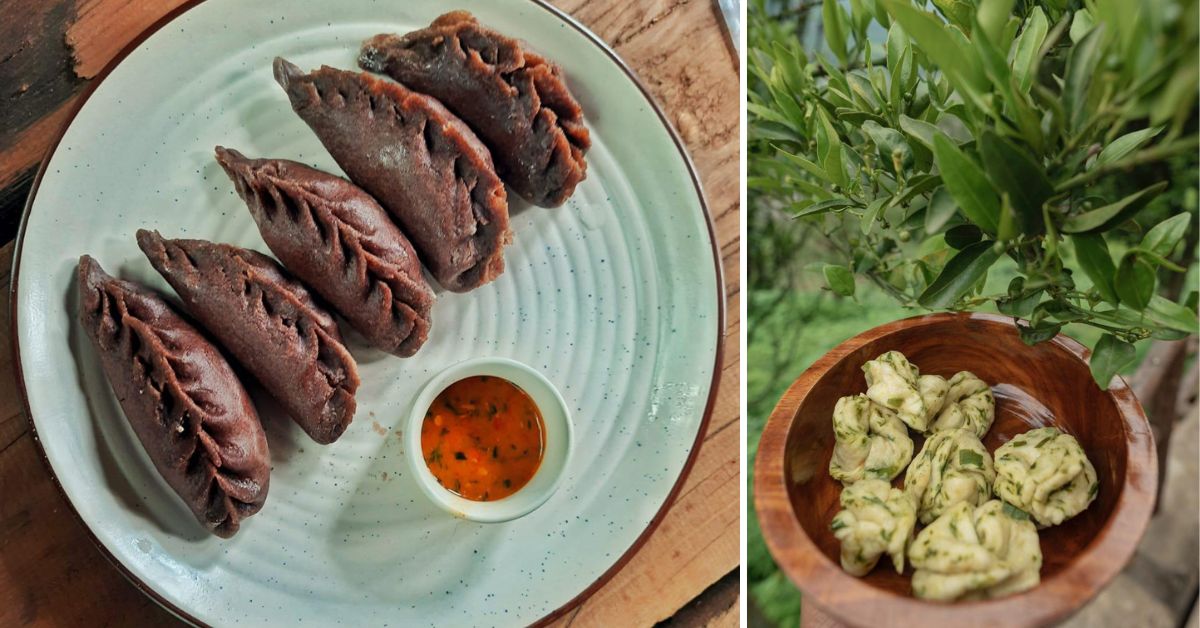 Millet momos are one of the standout dishes during the lunches at Damu’s Heritage Dine, Pictures source: Damu’s Heritage Dine
Millet momos are one of the standout dishes during the lunches at Damu’s Heritage Dine, Pictures source: Damu’s Heritage Dine
And it’s not just city folk for whom the menu promises intrigue; even the local youth can’t contain their excitement at these delicious platters. Leike herself is a fan. “Most of us are eating these dishes for the first time. Through the years, we had become used to eating the modern versions of these dishes, like momos made of maida (flour), but now we are getting a chance to eat the traditional variety of millet momos,” she shares.
A booming culinary archive
Few things make Sinku (52) as happy as bustling in the Damu kitchen along with her “sisters”. Some of the best friendships are forged over chutneys and picking out herbs together; the lunch prep becomes a bridge for stories. “We were sure we wanted to showcase our local food,” Sinku shares, proceeding to check items off her mental list: takto khaji (buckwheat noodles), millet tacos, thukpa (Tibetan noodle soup), and shyamarku (ginger chicken). The takto khaji is one of the toughest dishes to prepare, she explains. The others nod in agreement.
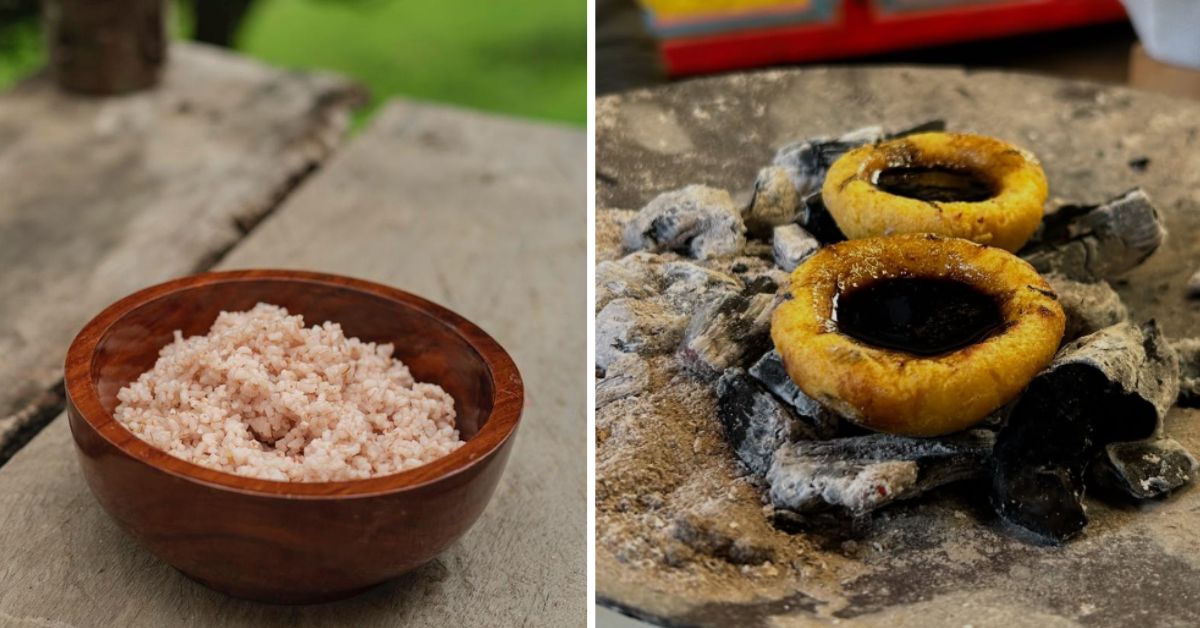 The local brown rice (L) and the phursing gombu (a corn tart with the oleoresins of the Chinese lacquer tree Toxicodendron vernicifluum that’s gently roasted in yak ghee over hot charcoal bits) (R), Picture source: (L): Damu’s Heritage Dine, (R): Kani
The local brown rice (L) and the phursing gombu (a corn tart with the oleoresins of the Chinese lacquer tree Toxicodendron vernicifluum that’s gently roasted in yak ghee over hot charcoal bits) (R), Picture source: (L): Damu’s Heritage Dine, (R): Kani
Featuring buckwheat noodles with local herbs and fermented soybean and chilli sauce, the dish is extensive because of its long farm-to-table sojourn. Once the buckwheat is harvested from the fields, the chaffs are removed, the grain is then ground into a fine powder in the chuskor (indigenous watermill) — you’ll be introduced to this on your guided tour before lunch — and then a dough is prepared. This goes into the takto shing (a handcrafted noodle maker); many intense clockwork motions around the wooden contraption, later, slender noodles begin spilling out, making the effort worthwhile. These are then seasoned with maan (taro roots) and dangoma (water celery) and mixed with a pungent chamin (chutney) of fermented soybean paste, and solu (chillies).
Another demanding dish is the phursing gombu (a corn tart with the oleoresins of the Chinese lacquer tree Toxicodendron vernicifluum that’s gently roasted in yak ghee over hot charcoal bits). It’s the procurement of these coveted oleoresins (extracts) that makes the prep painstaking. As Sinku reasons, “Not everyone has the knack of going into the forest and getting the extract.” If rumour holds, there’s only one person in the village adept at doing it without breaking out into an allergy.
 Orange salad (L) and dessi (rice fried in yak ghee with crushed walnuts and jaggery), Pictures source: Kani
Orange salad (L) and dessi (rice fried in yak ghee with crushed walnuts and jaggery), Pictures source: Kani
The Damu’s menu is beautiful, it reflects the traditional sensibilities, once on the brink of being lost to modernity. As the lunch is set before you, you’ll see it; the plattered dishes are equal parts yum and equal parts aesthetic.
During your meal, you’ll encounter churra gombu (a corn pie stuffed with fermented yak cheese), tsa tsa thukpa (soup with boiled corn and fish-mint), red rice, khura (buckwheat pancakes) with marmalade, a salad with oranges and freshly popped corn, and millet tacos stuffed with local greens and churra (fermented yak cheese). The meal finishes off with dessi (rice fried in yak ghee with crushed walnuts and jaggery).
Why is food central to the Monpa legacy?
Momos and thukpa.
For the longest time, this was the identity of the Monpa tribe. It’s something they’re looking to change.
Clustered in Tawang and West Kameng districts of Arunachal Pradesh, barley, buckwheat, and local kidney beans once drove the average of their farming produce. But once refined flour began making inroads into their kitchens, this changed. In fact, the elders of the community don’t remember a time when rice was as commonplace in their kitchens as it is now.
 The Monpa clan is clustered in Tawang and West Kameng districts of Arunachal Pradesh and earns primarily through agriculture, Pictures source: (L): Damu’s Heritage Dine, (R): Bhaskar Dey
The Monpa clan is clustered in Tawang and West Kameng districts of Arunachal Pradesh and earns primarily through agriculture, Pictures source: (L): Damu’s Heritage Dine, (R): Bhaskar Dey
They are thrilled with the idea of Damu’s Heritage Dine, seeing it as a way of documenting their tribe’s food in all its beautiful diversity.
WWF’s Nishant Sinha underscores that this was the programme’s intent in an interview with Condé Nast. “Our objective was twofold. One, to preserve their traditional architecture, which is slowly eroding. Two, to revive their culinary heritage,” he says.
And this dual-pronged approach is receiving tremendous applause.
Take, for instance, Rinchin Jomba’s momo recipe — boiled locally sourced potatoes and greens stuffed inside a wrap made of ongpu (finger millet) — which won the Millet Recipe Contest organised by the agriculture centre Krishi Vigyan Kendra in 2023; the contest was part of the International Year of Millets 2023 celebrations.
For Rinchin, the most special bit about being a part of Damu’s is the universe of self-sufficiency they’ve created, “We don’t buy anything from outside. Everything that we serve is from produce that is grown on our farms.” But, Rinchin advises reserving in advance, as they need prior notice to prepare the lunch.
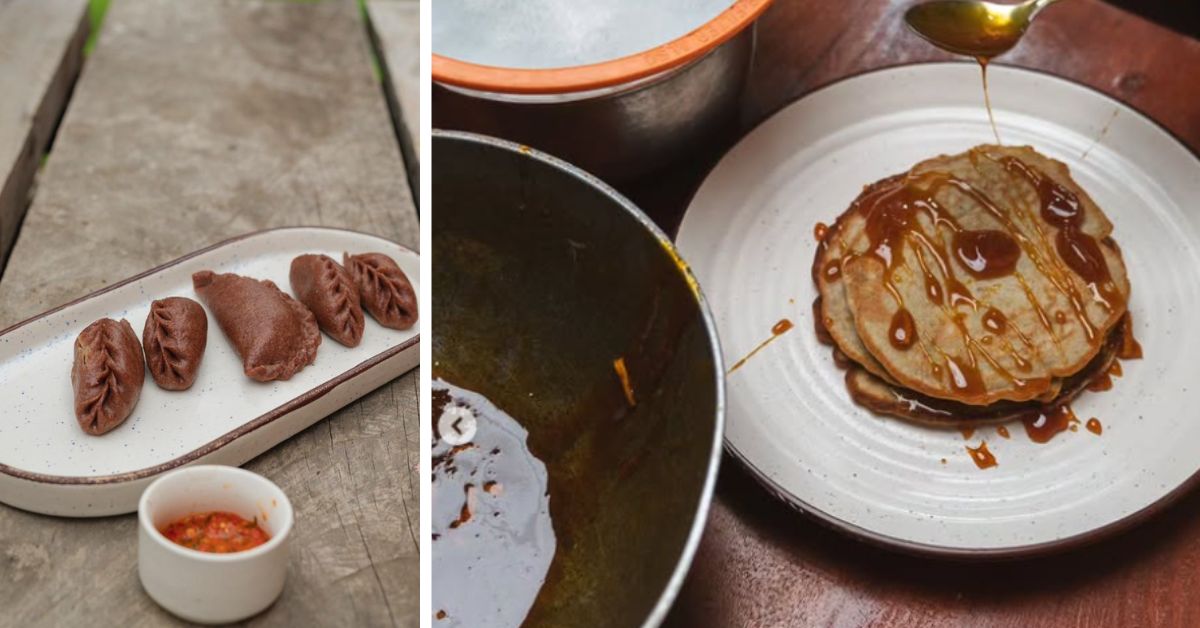 Millet momos (L) are a speciality of Rinchin Jomba, while the buckwheat pancakes (R) and a crowd puller. Pictures source: Damu’s Heritage Dine, (R): Tashdique
Millet momos (L) are a speciality of Rinchin Jomba, while the buckwheat pancakes (R) and a crowd puller. Pictures source: Damu’s Heritage Dine, (R): Tashdique
A typical lunch at Damu’s Heritage Dine lasts for an hour; the tariff is Rs 2000 per person if you are alone, Rs 1500 per person if you are in a group of three, Rs 1200 per person if you are in a group of 4-12 people and Rs 750 per person if the group size exceeds 12.
But a feast demands a fast before.
And so, before you commence your lunch, there’s a guided tour to the local ‘Living Museum’ filled with memorabilia of the Northeast lifestyle. Leike shares, “Here, we show how the Monpa tribe live, what they do, what they eat, the utensils they use, the traditional ways of cooking, the clothes they wear and how things were in the past.”
High in the Chug Valley of Arunachal Pradesh, a bright red table has assumed the role of a culinary custodian. And you should check it out.
Reserve your seat here.
Sources
News